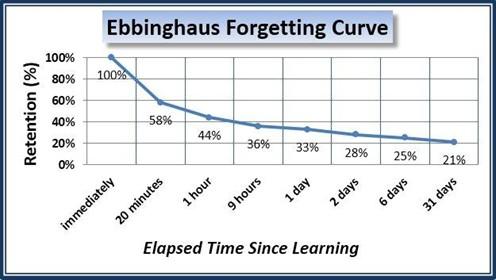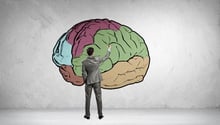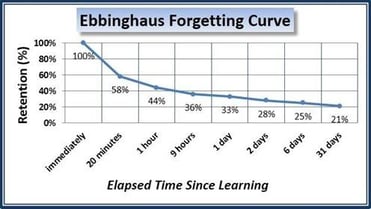Brain-Based Activities in the Virtual Classroom
5 Recommendations to Design Brain-Based Activities for the Virtual Classroom, and What Virtual Learning Experts® Need to KnowThis is part of an...


We're excited to have Oded Ilan, Chief Marketing Officer of Iridize, join our Guest BYTE speaker list on January 31. In support of his live learning event, "Overcoming the Forgetting Curve: New Content Creation Paradigms," Oded shares an important introduction to the forgetting curve and it's impact on training.
It would be an understatement to say that the training industry is brimming with new training technologies and tools. It took a while, but the technical communication arena has become one of the most vibrant, technology-adept and innovation-thirsty places to be.
Yet, as new learning tools and solutions continue to pop up one thing becomes more and more evident: New learning solutions are channeling traditional learning methodologies with new technology.
The human brain hasn’t altered considerably over the past several thousand years – but the demands from it have. Digital users are required to process more information in a month than our predecessors did during their entire lifetime. This means that our approach to information consumption and retention has to adjust itself drastically to these new conditions.
What if our brains could be rewired to consume, process and retain new material better? To understand what this means, let us break it down to scientific terms.
Understanding the Forgetting Curve
In the late 19th century, German researcher, Herman Ebbinghaus, discovered the Forgetting Curve. The forgetting curve is in fact the human inability to successfully retain information in our brain for more than several hours. It sounds ludicrous, but the fact is that 20 minutes after learning a new thing, our brains lose 42 percent of it, and after six days, you retain approximately 25 percent of the information. Come to think of it, it’s a wonder anyone graduated elementary school at all, ever.
Ebbinghaus contended that the way to overcome the forgetting curve is by spaced repetitions and constant testing. That may work for a student cramming for finals, but it is impractical, costly and unrealistic as an approach to enterprise training. In other words – it’s difficult to afford to invest so many resources in training.

The forgetting curve certainly explains much of the failures in enterprise employee training. Many unsuccessful software implementations are often attributed to lack of compliance, technophobia and resistance to change. In reality, much of the problem is in basic human inability to store so much learned information in their brain for longer than a day.
Forget What You Know About Learning
What if, instead of waging war on the forgetting curve, you found a way around it? Rather than taking on the intricate complexities of human learning mechanism, you access the performance “nerve center” directly. Remember: Employees don’t need to learn how to use every new software solution implemented, they need to know how to use it. And these two concepts are not mutually exclusive.
Today, the most effective way to bypass the forgetting curve is with smart use of microlearning and supportive technologies. These technologies cut down consumption of information to bite-sized chunks and serve information in a “just-in-time” format, allowing users to access the information they need when they need it, instead of undergoing a lengthy process of familiarizing oneself with the software and having to remember the usage flows.
This is an extrapolation of the “remember how to access the item instead of the item itself” paradigm (How Google is Changing the Way We Think) and it is essential for digital survival.
Focus on Performance
As can be seen, emerging technologies are moving in the direction of supportive training and effective conditioning, rather than simply using the old learning and memorizing techniques. In today’s fast-paced technological environment, we no longer have the luxury to master new software using traditional learning methods. Rather than battling the natural aspects of the human brain technology allows us to outsmart and circumvent the forgetting curve to deliver the skills to new employees.
The new approach to training is designed for modern enterprise goals: results oriented, focused on performance and targeting bottom line outcome. Supportive training and effective conditioning allows users to shift their learning efforts to skills that truly justify all that brain-energy. This includes improving sales and marketing skills, cultivating creativity in their field, increasing growth potential for the organization, and more. In short – save learning for what really requires learning. Offer supportive training and just-in-time solutions for the tools that help you get there.

5 Recommendations to Design Brain-Based Activities for the Virtual Classroom, and What Virtual Learning Experts® Need to KnowThis is part of an...

How the Design of the Virtual Classroom Can Also Align Business Goals, Objectives, and Learner Intent Even in an (almost!) post-pandemic age, the...

Design Skills Needed for the Emerging Virtual & Hybrid Learning Environments As remote work becomes more common, virtual training is now a key part...